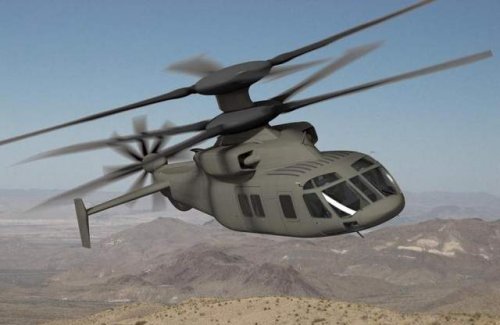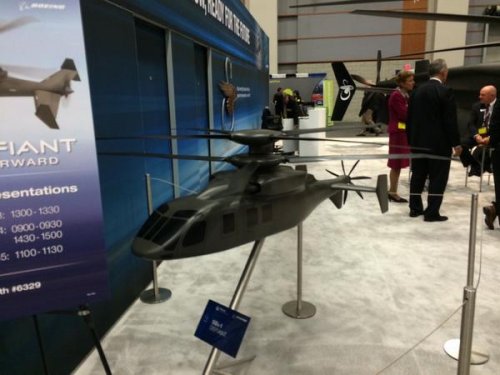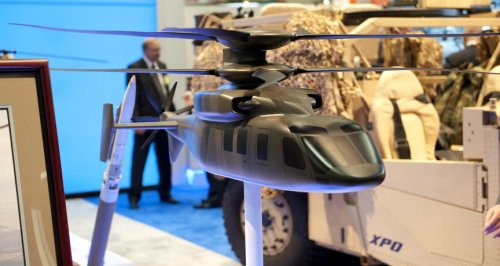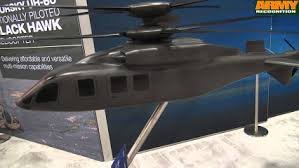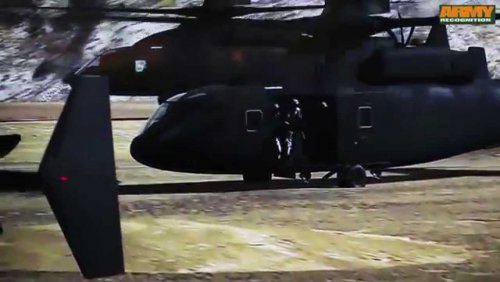Though the US Army has yet to make a formal announcement, according to reports the Sikorsky-Boeing team and Bell Helicopter Textron have been selected for government-funded Joint Multi-Role (JMR) program technology demonstrations.
The other competitors, AVX Aircraft and Karem Aircraft, both privately held companies, failed to gain approval for funding, though both will be encouraged by the Army to continue their efforts focused on the Future Vertical Lift (FVL) program.
The Boeing-Sikorsky Team and Bell Helicopter are expected to field working JMR demonstrators and perform a “first flight” prior to the end of the fourth quarter of 2017. Risk reduction will be a critical driver for the JMR program.
JMR is regarded as a science and technology precursor to the formal announcement in 2019 of a replacement aircraft for Army medium-lift under the FVL program. Valued by analysts in excess of $100 billion, FVL medium lift is intended to replace the Army’s aging fleet of nearly 4,000 Boeing AH-64 Apache attack helicopters and Sikorsky UH-60 Black Hawk utility aircraft and achieve initial operating capability in the 2035 time frame. Additional variants of FVL will follow, including light (scout reconnaissance), heavy (a CH-47 Chinook replacement), and ultra-heavy lift aircraft.
According to many experts, the Army’s ambitious FVL program represents nothing less than a revolution in rotary wing aircraft design. Preliminary requirements indicate that the aircraft should be able to carry 12 troops equipped with Land Warrior Systems, cruise at 230 knots or more, have a combat radius of 424 kilometers, and be capable of performing all requirements at 6,000 feet in temperatures of 95 degree Fahrenheit.
By comparison, current aircraft have a smaller payload, cruise at speeds of 155 knots or less, and operate within a more confined radius at 4,000 feet in 95 degree weather. The only fielded military rotorcraft that currently meets the Army’s FVL speed requirement is the Marine Corps MV-22 tiltrotor.
The stakes are high. The Army earlier this year announced a plan to decommission its fleet of OH-58D scout reconnaissance aircraft, as well as its fleet of TH-67 trainers, dealing a serious blow to Bell Helicopter’s military prospects. This leaves only the maturing multiservice V-22 program, which Bell shares with Boeing, and the US Marine Corps H-1 program.
Meanwhile, Boeing’s CH-47 heavy lift is maturing, though its AH-64 Apache program appears healthy. Also mature are Sikorsky’s H-60 programs, including the Army UH-60M and Navy SH-60R and S model aircraft.
The implications for the rotorcraft defense industrial base are significant. The world market for military rotorcraft is expected to drop from $12 billion annually to just $6 billion between now and 2018. Not all vertical lift primes and members of the supplier base are expected to survive. Many companies will increasingly depend on foreign military sales. Failing that, industry members will be forced to close major production lines and possibly merge or consolidate.
This is occurring in a backdrop of future budget uncertainty and the specter of sequestration.
The Sikorsky-Boeing JMR demonstrator, known as the SB>1 Defiant, features a co-axial design with counter-rotating rigid rotor blades for vertical and forward flight, a pusher propeller for high-speed acceleration and deceleration and an advanced fly-by-wire flight control system.
“Defiant will use Sikorsky’s proven X-2 technology to overcome aircraft design challenges, which will be critical requirements on future vertical lift aircraft,” said Mick Maurer, Sikorsky president. The FVL medium lift variant will incorporate new technology from the Army’s Future Affordable Turbine Engine Program (ATEP).
Bell Helicopter has teamed with Lockheed Martin, GE Aircraft Engines, Moog, GKN Aerospace, Spirit Aerosystems, AGC Composites, Eaton, Meggitt, Astronics and Lord Elastomerics to produce the Bell V-280 Valor. According to Keith Flail, Bell V-280 Valor program manager, “the clean sheet design of the Bell V-280 creates the capability to fly twice the range at double the speed of any existing helicopter.”
Bell’s design features newer, stronger and lighter materials, such as advanced composites and cost-saving elastomeric rotor structures.
The planned JMR demonstrator will feature the legacy General Electric T-55 engines, while the ultimate Bell Helicopter FVL design will feature technology advances from the Army’s ATEP Program.
The success or failure of Future Vertical Lift depends largely on the state of the defense budget and the probable return of sequestration in 2016. In recent remarks, Dan Bailey, the Army’s JMR program director, maintained that the $200 million JMR program was not in danger of cancellation.
“From a science and technology perspective, I have full confidence that we are not at risk,” he said.
But while government leaders regard funding for the two competing demonstrators as near certain, funding issues could delay the launch of a formal FVL completion well beyond 2019. If this materializes, JMR technologies might be applied to upgrade existing rotary wing military aircraft well beyond FVL’s intended IOC in 2035 — budgets permitting.■
Flater, a former executive director of AHS International (1991-2011), consults on issues regarding aerospace and the defense industrial base.

